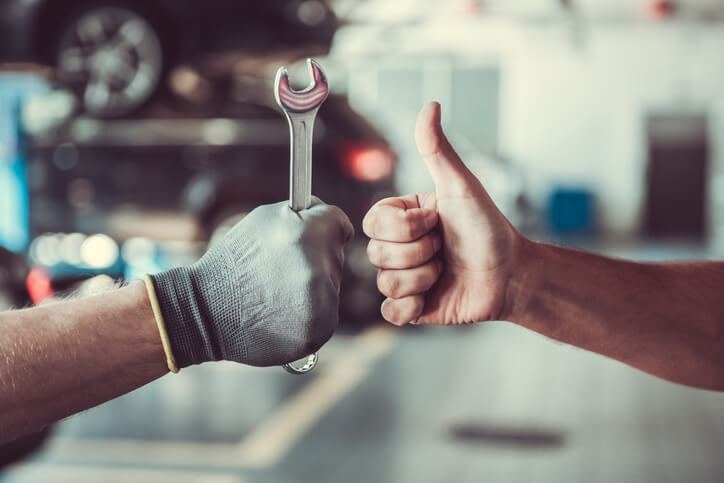There’s a lot to think about if you’re planning to buy a car for yourself and your family. We’ll help you learn more about vehicle types, safety features, and whether new or used cars might be a better option for you and your family.
Which Vehicle Type is Right for You?
Once you have your budget set, it’s time to start looking at vehicle type. Your driving needs should help determine the type of car you buy. Let’s explore some of the main types of vehicles and the features of each.
Coupe: If you’re looking to have fun when you drive, the coupe is the way to go. Yes, the coupe can be efficient if you’re the only person riding in it and your only cargo is a set of golf clubs. But if you plan on having lots passengers and more cargo, consider a different vehicle type. That’s not to say you can’t have your coupe. The Scion tC boasts some of the best rear seat leg room and cargo of its type, but you may not want to make it your primary family car.
Sedan: If you’re going to have passengers in your car on a regular basis, start looking at sedans. If you have children or grandchildren that ride with you, then this is definitely where you should begin. Sedans, such as the Mazda 6, offer great safety, fuel economy, style and storage space at a low sticker cost. The downside of sedans is they generally have less cargo space and lower safety ratings compared to SUVs. And most don’t handle as well as SUVs in snowy conditions. If you’re set on getting a sedan and safety is your utmost concern, there are options available to meet your needs. We’ll get deeper into those safety features later on in this article.
SUV: One of the top selling points of SUVs is their collision safety and handling in winter weather conditions. The 2023 Honda Passport earned a five-star safety rating from National Highway Traffic Safety Administration (NHTSA). SUVs also offer phenomenal visibility, headroom and storage due to their height. Because they’re higher off the ground, most people find them easier to get in and out of. Some SUVs can carry more than 5 people. If you’re going to drive with this many people on a regular basis, though, you may want to consider a minivan. The downside to SUVs is most have poor fuel economy and higher initial cost compared to other car types. The Mercedes G550 only musters 11 MPG on average. They’re also more difficult to park due to their size.
Hatchback: Sure, not everyone loves the look of hatchbacks, but they offer the price and fuel economy of a sedan plus the cargo storage of an SUV. The downside is they fall short on collision safety and snow handling when compared to SUVs. If you plan on having 3-4 passengers and stowing cargo, but want to be cost-efficient, look at hatchbacks. The Kia Soul has 62.1 cubic feet of cargo space when its back seats are folded down. This is about the average cargo space for a compact SUV with its back seats folded down.
Pickup Truck: Poor fuel economy and tricky handling are why pickup trucks are not the first choice for most people. There is one very good reason a person should consider buying one, though. Pickup trucks are ideal for transporting cargo. The Ram 1500 offers 74.7 cubic feet of storage in its flatbed – the best of any pickup.
Remember, though, you can rent pickup trucks from places like Home Depot and Lowe’s. If you only need the pickup’s cargo space a few times a year, consider renting. Also, be warned. If you buy a pickup truck, you may get a lot more requests from friends and family for help moving their stuff.
Minivan: If you plan on driving more than four passengers regularly, consider buying a minivan. Sure, they’re not exactly the coolest car on the road but they offer up spacious comfort that even an SUV can’t rival. Minivans boast high scores in almost all categories of cost, safety and comfort. The Chrysler Pacifica was awarded editor’s choice by CarandDriver.com. If you have four or more kids, or do a lot of carpooling, consider buying a minivan.
Snow Tires: No, they’re not a vehicle type. But snow tires have been proven to reduce collisions in winter conditions. If you’re thinking of buying an SUV only for its winter handling, consider buying a sedan, minivan or hatchback instead and adding snow tires for the winter months. It’s a more affordable option that still provides great winter handling.
What Are the Pros and Cons of All-Wheel, Front-Wheel & Rear-Wheel Drive?
These are the pros and cons for each of the three types of driving modes.
Rear-Wheel-Drive
Pros
- A durable driveshaft that can handle potholes and the occasional curb.
- Better handling, especially at high speeds. This is due to the fact that weight is more evenly distributed over the entire car.
Cons
- Terrible handling in bad weather conditions. This is because the front wheels act as a guide and the rear wheels move the car. If the front wheels lose traction, it’s impossible to steer the car but it can continue to accelerate.
Front-Wheel-Drive
Pros
- More affordable because of simpler manufacturing. This is because the engine and transaxle are built together and installed from underneath the vehicle.
- Much lighter vehicle which makes for greater fuel efficiency.
- Better traction in poor weather conditions.
Cons
- Poor handling at high speeds. This is because most of the weight rests at the front of the vehicle. This unbalanced weight can cause the car to lose control when maneuvering at higher speeds.
- Easily damaged because there are more parts to the drive shaft.
All-Wheel-Drive
Pros
- Better acceleration in all driving conditions.
- Improved traction for towing or driving on dirt or sand roads.
Cons
- Added upfront cost due to the complex engineering and construction of the vehicle.
- Requires more maintenance. This is because most vehicles with all-wheel-drive need extra care to maintain the drivetrain’s differentials—sets of gears that sense traction loss and allow the wheels to spin at different rates.
- Less fuel economy due to the increased weight of the vehicle and the excessive load placed on the engine.
What Are the Engine Type and Fuel Economy Options?
There are four options to consider when choosing the engine type for your next vehicle. These options are diesel, hybrid, electric and gas. There are some of the pros and cons for each engine type. You can find and compare fuel economy for cars from 1984 to the present on fueleconomy.gov.
Diesel
Diesel has returned to personal vehicles. These engines burn fuel more efficiently than gas engines and usually have longer lifespans than gas engines.
Pros:
- Drivers of diesel vehicles notice a slight increase in fuel economy when driving at lower speeds.
- The fuel economy greatly increases at highway speeds.
Cons:
- Fuel costs for diesel are slightly higher than regular gas.
- It’s more difficult to find a diesel mechanic. This can make repairs cost a bit more.
- The sticker price of diesel cars is usually much higher than their gas counterparts.
Hybrid
This term describes vehicles that have combustion engines and regenerative braking. Regenerative braking uses the kinetic energy of the brakes to charge the battery.
Pros:
- Hybrids have better fuel efficiency in stop-and-go traffic. This is because the constant braking charges the electric motor battery.
- Hybrid vehicles use their electric motor battery to assist with acceleration and for driving under 15 MPH.
Cons:
- Hybrids have higher sticker and repair costs and lower fuel efficiency on the highway.
- Hybrid cars struggle to reach highway speeds as easily as gas cars do.
- They usually lack sport-tuned suspension and other performance enhancements. This is because hybrid cars need to conserve weight to offset the weaker engine.
Electric
Electric vehicles have been around since the mid-1800s (yup). But it wasn’t until Tesla’s Roadster and Model S came on the market that people took them seriously. Tesla Motors showed that an electric motor can accelerate faster than a $500,000 Lamborghini Aventador can. The Model S and Roadster offer power, style and zero emissions—but this comes at a price.
Pros:
- Electric vehicles have an almost silent motor.
- The torque and acceleration is impossible to replicate in a combustion engine.
- It’s possible to charge them at home using only renewable resources.
- Whichever energy source you choose, there are zero tailpipe emissions.
Cons:
- Electric vehicles have a limited range. This can sometimes be as little as 80 to 100 miles before needing a recharge.
- Charging stations are not as common as regular gas stations.
- It takes much longer to recharge the electric car battery than it does to fill a gas tank.
- The sticker cost of most electric vehicles is high, starting at around $40,000.
Want to learn more about electric vehicles? Check out these free virtual workshops from AARP.
Gas
Gas vehicles often get a bad reputation. They tend to get kicked off to the side when an innovative new form of transportation comes about. There are some obvious cons but also some forgotten pros to driving a gas vehicle.
Pros:
- Gasoline is still the most affordable form of fuel available for mainstream vehicles.
- Gas cars have a longer driving distance per tank than electric and hybrid vehicles.
- There are far more gas stations than there are charging stations.
- Gas vehicles have a much lower sticker price than do diesel, electric or hybrid vehicles.
Cons:
- Gas-burning engines create a significant amount of pollution. This contributes to human health issues and environmental impact.
- Gas burning vehicles rely on fossil fuels which deplete over time.
How to Decide Whether to Buy a New or Used Vehicle
New cars can depreciate by almost 60% of their original value within five years. That means you could lose value simply by owning your new car, no matter how well you maintain it. The plus side of buying a new car is that manufacturers often give several years of covered maintenance and repairs. This can offset some of the depreciation.
Consider buying a new car if you’re the type of owner who drives a car until the wheels fall off. Depreciation is only an issue if you plan on selling or trading your car in a few years. If you do plan on trading or selling your car soon, consider purchasing a used car. Vehicles that are only two years old can still offer a drive-like-new experience. Used cars that are only a few years old can often be found with few miles on the speedometer and few dings on the bumper.
Keep in mind that car prices for both new and used vehicles are still higher than they were pre-pandemic. In particular, used car prices are at a record time high due to greater demand and supply shortages. That’s why it’s important to shop around to help make sure you’re getting the best deal.
What’s Right for You: Buy or Lease?
There’s a significant difference between leasing and buying a car. Leasing is more comparable to renting and buying a car is … well, it’s like buying something … with a loan (usually). In most cases, buying a vehicle is a more economical decision. It offers you much more freedom in what you do with the car and when you can get a new one. Leasing a vehicle is often only a good idea if you want to get a new car with the latest technology and only keep it for a few years. For example, if you want your teenage driver to have an incredibly safe car, but expect them to buy their own in 4 years, you may want to lease.
Tips for Determining Your Car-buying Budget
What’s a good rule of thumb for a budget? Your car payments and car insurance should cost no more than 20% of your monthly take-home. Carpaymentcalculator.net has a great calculator to help you figure out what your monthly car payment will be. This even includes tax on the loan.
Tip: Don’t forget to factor in the cost of property taxes on the vehicle.
Safety Features
In the last 30 years, the NHTSA has made a requirement that all vehicles have several key safety features. If you’re looking to buy a used car, make sure that it has the following features to help ensure your and your family’s safety:
- Airbags and passive restraints
- Inside trunk release handle
- Tire pressure monitor
- Electronic stability control
If you’re looking to buy a new vehicle consider getting one with the following safety features:
- Antilock brakes
- Traction control
- Brake assist
- Forward collision warning
- Pedestrian detection
- Blind spot warning
- Backup camera
- Lane departure warning
Learn more about the new car technology headed our way.
Don’t let buying or leasing a car overwhelm you. Put the time in at the beginning of the process to discover and prioritize what type of vehicle best meets your needs and the features that are most important to you to have.
You can do most of your research and discovery online and narrow down your choices to those models that meet your requirements. Then head to a few car dealerships to test drive those on your short list. You’ll never know if a vehicle is right for you until you buckle-up in the driver seat (but don’t forget to try out the passenger seats as well!) and take it for a spin.
Read Next: How to Break in a New Car







Plug in Hybrids have significant advantages over simple hybrids. If used correctly (Electric Vehicle under about 45 MPH and hybrid at higher speeds, the mileage can be spectacular! I have a Prius Prime plug in and it is very powerful, great acceleration and fun/sporty to drive.
How do I go about buying a car in a different state?